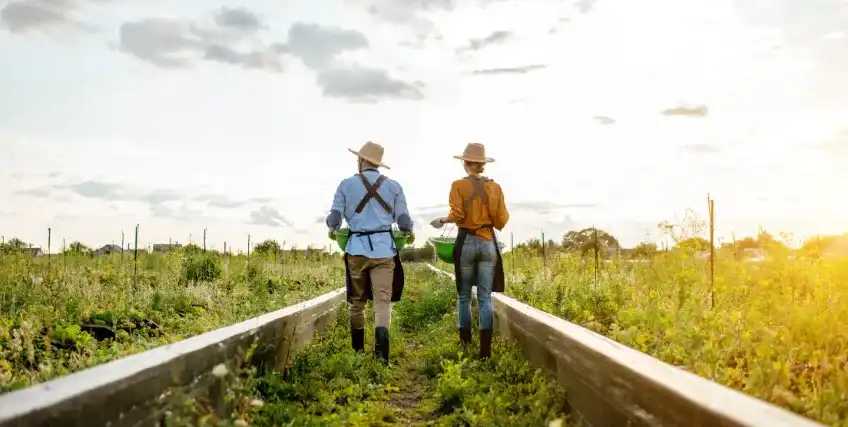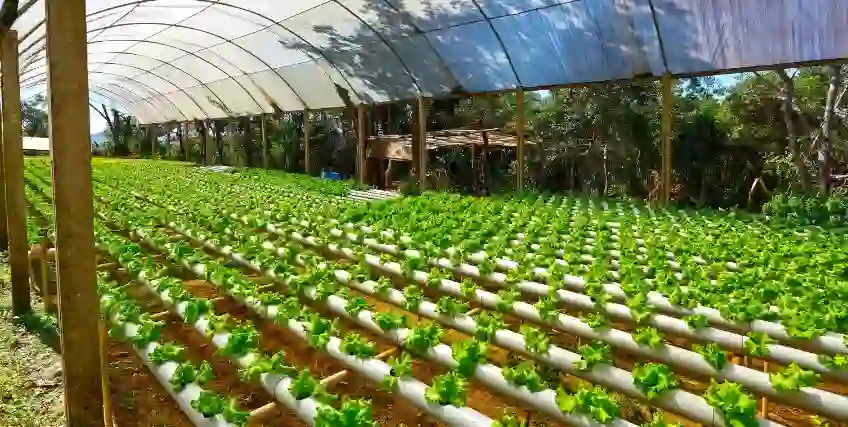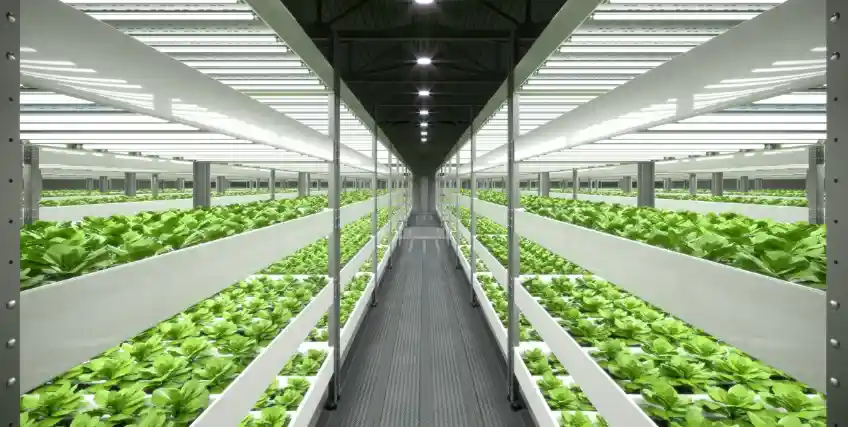Government Grants for Hydroponic Farming: How to Secure Funding for Your Agri-Business
Oct 07, 2025 | Last Updated on: Oct 08, 2025

Hydroponic farming is a growing industry centered around urban agriculture. The hydroponics market in North America has an estimated value of $3.64 billion in 2024, according to Research and Markets. That number is expected to grow to $10.75 billion by 2033. Last year, in 2024, Vertical Harvest Farms received a whopping $59.5 million for a new hydroponic farm.
If you’re a beginning farmer or agri-business startup, you might not have all the financial resources you need. Costs for setting up a hydroponic system can vary widely. Larger-scale vertical farming could have an even higher upfront cost.
To help offset expenses for your enterprise, you can look into government grants for hydroponic farming and alternative financing solutions.
Types of Government Grants for Hydroponic Farming
Hydroponic farming is transforming food systems. Instead of needing a large mass of land and soil to create the food supply, it can be done in urban areas without the need for soil.
For agri-businesses who want to bring local food to their community through urban farming, hydroponic systems are a solid solution. As a small business though, it can be tough to get started if you have limited capital and cash flow. Below we break down different government grants for hydroponic farming to look into.
Federal Government Grants for Hydroponic Farming
If you’re looking for grants for hydroponic farming, there are various options from the federal government.
Urban Agriculture and Innovative Production Grants (UAIP)
The U.S. Department of Agriculture (USDA.gov) offers these government grants for hydroponic farming. According to the website, the agency offers competitive grants to help farmers, gardeners, and relevant stakeholders expand.
The funding opportunities can support education, food access, and related startup costs for new farmers. The USDA is putting more funding into government grants for hydroponic farming, too. The agency is making $2.5 million available in grants for this program specifically, according to a press release from January 2025.
Sustainable Agriculture Research and Education (SARE)
The Sustainable Agriculture Research and Education (SARE) program offers government grants for hydroponic farming available through the federal government. The program has been around for 35 years and receives funds from the USDA’s National Institute of Food and Agriculture (NIFA). Funds from the program have supported ranchers, farmers, and researchers and have totaled $389 million since 1988. Farmers and ranchers can apply for a SARE grant, but it should be noted that the funds can’t be used to start a farm.
Typically, funds are available for research and education. Some examples of how funds can be used include local and regional food systems, on-farm renewable energy, marketing, and more. The grants offer funds by region, so you’ll need to go to one of the web pages (West, Northeast, etc.) to review the application process.
Within each region, there may be specific farming grants available. For example, the Northeast region has seven grants available including:
- Farmer Grant Program
- Farming Communities Grant Program
- Professional Development Grant Program
- Research and Education Grant Program
- Research for Novel Approaches in Sustainable Agriculture Grant Program
- Partnership Grant Program
- Graduate Student Research Grant Program
Conservation Innovation Grants (CIG)
The Conservation Innovation Grants (CIG) from the Natural Resources Conservation Service is a program that “supports the development of new tools, approaches, practices, and technologies to further natural resource conservation on private lands,” according to the website.
If your hydroponic farm meets the requirements, you may qualify for one of the three funding
opportunities, some of which may qualify as government grants for hydroponic farming.
- CIG Classic: Overall, this is a national competition that supports projects in the early stages that pilot new tools and technologies.
- CIG On-Farm Conservation Innovation Trials (On-Farm Trials): This is also another national program that supports projects that boost widespread use of conservation approaches in tandem with agricultural production.
- State CIG Classic: This is similar to CIG Classic but on the state level.
The website notes that you may look for instructions on how to apply when the competition opens up on Grants.gov. For the State CIG program, you’ll need to reach out to your State NRCS office.
In July 2024, the USDA announced that the agency planned on investing in 53 Conservation Innovation Grants projects for a total of $90 million.
One notable award recipient in the hydroponic farming community is Brooklyn Grange, based in Brooklyn, New York. Brooklyn Grange received funding in the 2021 award year for a total of $181,993.00.
Value-Added Producer Grants
Through the Rural Development program from the U.S. Department of Agriculture, there are Value-Added Producer Grants available. While these may be used as government grants for hydroponic farming, there are specific eligibility requirements.
Funding helps agricultural producers to create value-added products and activities. These can help with marketing and boosting income.
The program has $30 million in available funding, with two types of grants available with different maximum loan amounts. Planning grants, which can be used for business plans or your prospective value-added products, have a limit of $75,000.
Working capital grants, which are available to help with operating costs, salaries, and marketing, have a much higher limit of $250,000.
State and Local Grants
Aside from the federal government grants for hydroponic farming, you can also look into state and local grants. Check the different programs available in your specific state or local community.
For example, New York State has various funding opportunities from the Department of Agriculture and Markets. Some potential options that may work for hydroponic farming include:
- Urban Farms and Community Gardens Grant Program (In July 2025, it was announced that $2.5 million is available for this program)
- Climate Resilient Farming Program
Alternative Financing Options
Getting government grants for hydroponic farming is ideal. If you’ve taken advantage of all you qualify for or aren’t eligible, you have other options to look into.
Term Loans
You can get funding for your agri-business with term loans. Funds come in the form of a lump sum to help you cover major expenses. That way, you can make moves faster and grow your business. Repayment is spread out over a specific schedule. Generally, term loans have fixed rates and terms, which can help simplify your monthly payments.
Microloans
The Farm Service Agency (FSA) from the U.S. Department of Agriculture has different loan and financial assistance programs for farmers and ranchers. But as an alternative to government grants for hydroponic farming, you can look into microloans. Financing is specifically for smaller, non-traditional operations and beginning farmers. Those working with hydroponic or aquaponic systems, as well as farmers’ markets, may qualify.
You may be able to get Direct Farm Ownership Microloans, which are available to build or improve farm buildings or Direct Farm Operating Microloans for essential tools, among other uses.
The good news is that there is no minimum loan amount under this program. However, given the name, the microloan maximum loan amount is $50,000.
Equipment Loans
Hydroponic farms require a lot of equipment. From climate controls to specific lighting setups and more, the costs can add up quickly. Equipment loans, as the name suggests, help you purchase equipment. That can ease the burden of buying everything upfront.
In many cases, the equipment is the form of collateral for the loan. Because it's an asset that backs the loan, equipment loans may have more flexible eligibility requirements.
Final Thoughts
Whether you’re just starting out with hydroponic farming or you’re looking to expand your business, there are financing options available. Researching government grants for hydroponic farming is your best bet for help. But you may also be able to get low-cost financing through microloans or other loan products from online lenders and financial institutions. Whether you pursue hydroponics government grants or loans, having a solid business plan, supporting documents, and a fleshed-out idea of how you’ll use the funds will help.
FAQs About Government Grants for Hydroponic Farming
If you want more information on government grants for hydroponic farming, we cover answers to frequently asked questions.
What Government Grants for Hydroponic Farming Are Available?
Various government grants for hydroponic farming are available. You can look into USDA grant programs such as Urban Agriculture and Innovative Production Grants (UAIP), Conservation Innovation Grants (CIG), as well as state and local grants. Review the eligibility requirements, as each program has different mandates.
Where Can You Get Farming Loans and Grants?
The Farm Service Agency has farm loan programs available. You can also look into private lenders, SBA loans, banks and credit unions. Government grants for hydroponic farming are an option from the USDA.
What Loan Options Are Available for Urban Farmers?
Urban farmers can look into microloans from the Farm Service Agency as well as options from online lenders and other financial institutions. You may qualify for term loans or equipment loans to help grow your business.
How Can You Get Financial Assistance as a Hydroponic Farmer?
Government grants for hydroponic farming can offer financial assistance to small business owners. You can look into USDA Urban Agriculture and Innovative Production Grants and Sustainable Agriculture Research and Education (SARE) to start. Then, review options in your state and region.
How Do You Apply for Government Grants for Hydroponic Farming?
To apply for government grants for hydroponic farming, review the program information page for instructions. Government funding for farmers is available through the USDA and specific state programs. Each option has different requirements, application processes, and deadlines.
Frequent searches leading to this page
Related Articles
Government Grants for Hydroponic Farming: How to Secure Funding for Your Agri-Business
October 8, 2025
Grants for Hydroponic Farming: Funding Options to Grow Your Agribusiness
October 8, 2025
Hydroponic Farm Business Loans: The Complete Funding Options Guide
October 8, 2025




